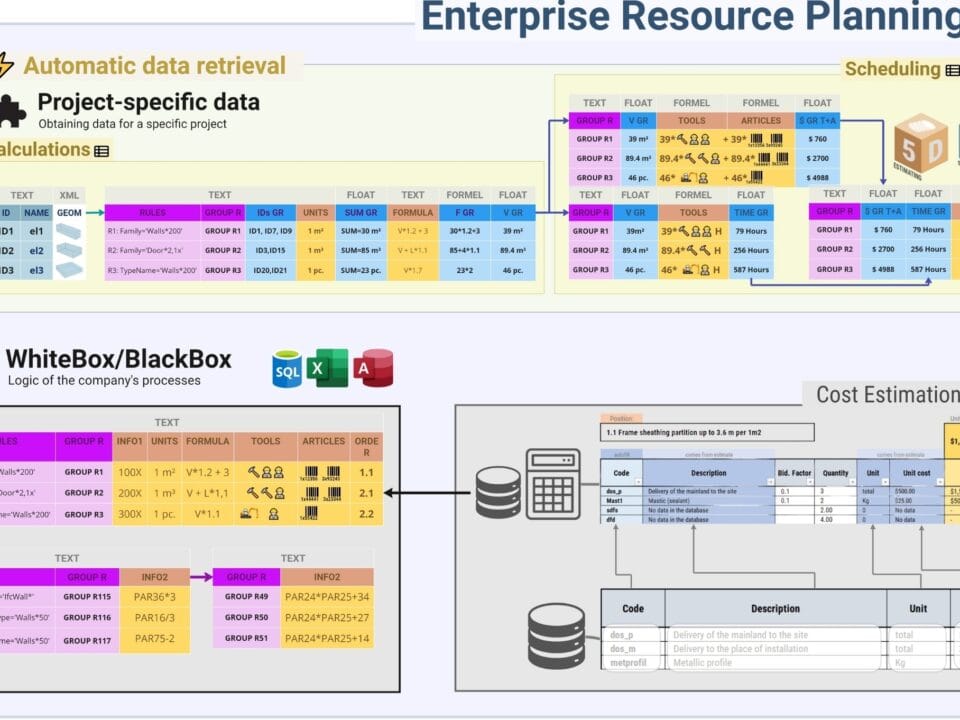In this part, we have shown how structured data becomes the basis for accurate cost and schedule calculations for construction projects. Automating the QTO, scheduling and estimating processes reduces labor costs and significantly improves the accuracy of the results.
To summarize this part, it is worth highlighting the main practical steps that will help you apply the discussed approaches in your daily tasks. These approaches are universal – they are useful both for the digital transformation of a company and for the daily work of professionals involved in calculations:
- Automate routine calculations
- Try to find standardized job costings that you can relate to in your work
- Analyze which methods are used to cost or calculate works or processes at the construction site in your country (Fig. 5.1-7).
- If you are working with a CAD system – explore the automatic extraction of specifications and QTO data in your CAD (BIM-) software.
- Use the LLM to write draft code to automate calculations
- Develop your own tools for QTO
- Create scripts or tables to automate volume counting
- Standardize categories and groups of elements for a consistent approach to assessment
- Document the calculation methodology to ensure reproducibility of results in new projects
- Integrate different aspects of the project into your work
- If you’re working with modular systems, try visualizing your processes not only as diagrams or charts, but also at the data level – especially in the form of tables
- Master the automatic merging of data extracted from CAD databases with calculations – with Python code using grouping, filtering and aggregation
- Create clear visualizations of QTO groups to present complex information to colleagues and customers
These steps will help build a sustainable calculation system based on automation and data standardization. This approach will improve accuracy and reduce the routine of day-to-day calculation issues.
The following chapters are dedicated to the technical aspects of CAD – (BIM-) products and the reasons why CAD databases are still difficult to integrate into companies’ business processes. If you are not interested now in the history of BIM implementation in construction, the evolution of CAD tools and the technicalities of working with these technologies, you can go straight to the seventh part of the book “Data-Driven Decision Making”.



















